 |
Catholicos of All Armenians received the participants of the 12th ARF Youth Camp
His Holiness, during a meeting with the participants of the 12th Pan-Armenian Youth and Student Congress of the Armenian Revolutionary Federation, touched upon the occupation of Artsakh, the protection of the rights of the Armenians of Artsakh deprived of their homeland, and the return of Armenian prisoners still held in Azerbaijan. The Catholicos of All Armenians spoke about the problems of preserving the Armenian spiritual and cultural heritage of Artsakh and the difficult situation prevailing in the country. He considered national unity, love for the homeland, and loyalty to national values to be important, which are the only means by which it will be possible to overcome the challenges.
|
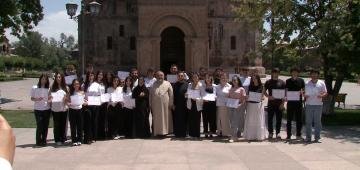 |
Participants of the Armenian Studies and Religious Studies course received certificatesThe young people have been hosted in the Mother See of Holy Etchmiadzin in recent weeks, learning the Armenian language and Armenian history. They have received spiritual and religious knowledge. They have participated in cultural programs, art and craft classes at the Youth Center of Holy Etchmiadzin. The young people, who arrived from Russia, the United States, Great Britain, Brazil, Austria and Georgia, have visited holy places, participated in liturgies in the Mother Cathedral and Sevanavank. |
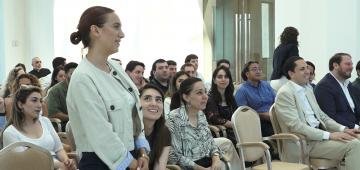 |
AGBU Focus Program participants met with His Holiness Karekin II, the Patriarch of All ArmeniansIn about 28 countries, under the auspices of AGBU, Young Professionals Groups operate, implementing community projects, often for the motherland. Young Professionals Groups hold their joint gathering in a different country every two years. The Patriarch of All Armenians has noted that this is how young people love and become attached to their homeland. |
 |
Clergy consider law enforcement actions at the Mother Cathedral a national shameIn the Mother Cathedral, Bishop Narek Berberian, Primate of the Diocese of Brazil, urged the faithful to be steadfast, as the Armenian Patriarchs were. The chain of Holy Liturgies began on June 30. On July 5, the feast of the discovery of the relics of St. Gregory the Illuminator will be celebrated. |
 |
Prayers were held in the Mother Cathedral for the detained archbishops and Samvel KarapetyanBishop Mushegh Babayan urged the faithful to pray, as only in this way can they dispel the loneliness of the imprisoned Archbishops Bagrat and Michael, and national benefactor Samvel Karapetyan. The Bishop invited the faithful to ask for the Lord's support for them, so that they can overcome difficult trials and restore justice. |
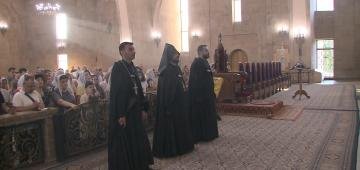 |
At St. Gregory the Illuminator Church, believers prayed for those in captivity and distressDuring the evening liturgy, the faithful prayed for those in captivity and distress. What to do when your brother is in distress, how to face difficulties and deprivations, whether to retreat or accept them as a test? The faithful expect to receive answers to these questions from the clergy. |
 |
A conference entitled "The Church at the Origins of Statehood" was held in YerevanHistorians consider the Armenian Church to be a structure that preserves the idea of statehood. The Church prepared the foundations of Armenian statehood from the late Middle Ages to the modern period. In practice, it was the Church that transmitted the idea of a national state to generations. Historians consider the thesis that the Church has hindered the formation of statehood throughout history to be baseless. |
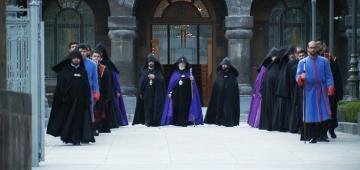 |
Divine Liturgy celebrated at the Mother Cathedral for those in prisonThe liturgy held on Monday was attended by state and public figures of Artsakh, as well as family members of Armenian prisoners illegally held in Azerbaijan. Archbishop Vrtanes noted that the military-political leadership of Artsakh has been in Azerbaijani captivity for about two years, which is a more spiritual than political test for our Christians and Armenians. According to him, the enemy is judging them because they personally testify to the right of Artsakh to independence. He also called on everyone to remember in daily prayers the imprisoned Archbishops Michael and Bagrat, as well as the devoted benefactor of the church, Samvel Karapetyan. |
 |
The relic of Saint Stepanos the Proto-Deacon has been moved to the church of the village of ChknaghOn the occasion of the 21st anniversary of the consecration of the St. Stepanos Church in the village of Chknagh, by the Patriarchal direction of the Catholicos of All Armenians, the relic of Saint Stepanos the Proto-Deacon was transferred from the Mother See of Holy Etchmiadzin to Chknagh. The faithful communed with the power emanating from holiness. The celebrant invited the faithful to pray for the illegally detained Archbishops Michael and Bagrat and national benefactor Samvel Karapetyan. |
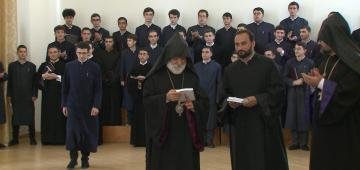 |
11 deacons graduated from Gevorgyan Theological SeminaryAt the closing ceremony of the 2024-2025 academic year of the Seminary and Vazgenyan Theological Seminary, 3 students from each classroom received encouraging gifts for their progress. The Armenian Apostolic Church Choir, led by Artashes Baburyan, performed a musical recital for the Brotherhood of the Mother See and long-time lecturers of the Seminary. |
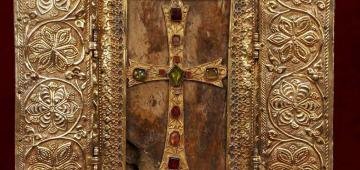 |
The depository-museum of the Mother See, closed for more than 8 years due to the renovation of the Cathedral, will reopenThe museum will display relics of pan-Christian and pan-national saints, printed and handwritten manuscripts. In 1869, a depository was built next to the Cathedral, where the church's treasures and pan-Christian relics were stored. Since 1984, during the reign of Vazgen I, the Patriarch of All Armenians, the depository area has been operating as a museum. The oldest exhibit is the 5,000-year-old relic of Noah's Ark, the newest are the handmade, holy altar crosses created at the beginning of the 20th century. |
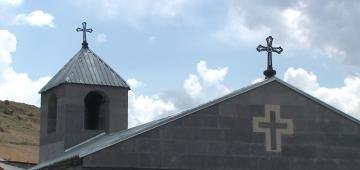 |
The Church of St. Mesrop in the village of Akunk, Gegharkunik region, has been reconsecratedThe Church of St. Mesrop in Akunk was built in the 15th-17th centuries. During the Soviet years, it was turned into a warehouse. The Tadevosyan brothers began restoring the dilapidated, ruined church years ago, but it remained unfinished. In the end, the sanctuary stood thanks to the large and small donations and joint efforts of the people of Akunk. |
